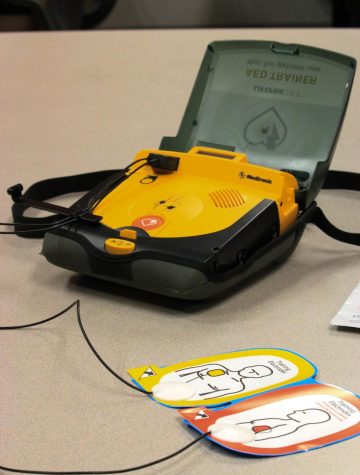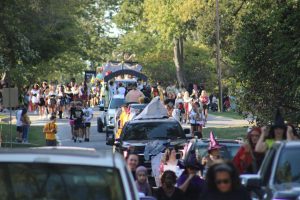Cardiac Arrest
October 6, 2023
Cardiac Arrest affects hundreds of thousands of people every single year. There are many misconceptions about cardiac arrest and heart attacks being the same thing.
“In its simplest form, cardiac arrest is when the heart stops and there is no blood flow to the brain.” Athletic Trainer Cade Arnold said.
Even though both do come from issues from the heart and cardiovascular system they affect people differently and come with very different risks.
“A heart attack is an issue with the cardiovascular system, itself. The arteries and things like that; the body’s plumbing. A heart attack causes, ultimately, cardiac arrest, but it is its own thing.” Assistant Chief Craig DuPlantis, EMS Chief of the Independence Fire Department, said.
Reacting fast to medical events is critical. You may not see its effect on the patient by looking at them, but things are constantly changing within the human body every second.
“So, without early intervention and CPR following cardiac arrest the main thing is deprivation of oxygen to the brain,” Arnold said.
Lack of oxygen anywhere in the body is a serious event. However, the brain needs oxygen to function properly and help the rest of the body system work correctly.
“Which can cause a lot of deficits in cognitive function, memory, speech, you name it depending on how long the brain goes without the oxygen because once the heart stops the blood is unable to flow to supply that.” Arnold said.
The faster the patient can receive medical attention, the less amount of risk there is for them too. Medical intervention is not as simple as it may sound. It consists of many people and events to work successfully.
“Medical intervention with a heart attack will be things like getting to an ER or maybe into surgery immediately, but it will start with a doctor, or more likely, a paramedic on an ambulance or fire truck, getting you on oxygen, getting an IV in your vein in case we need to give some life-saving cardiac drugs, and taking a look at your heart on a cardiac monitor (EKG).” DuPlantis said.
While heart attacks require a lot of medical attention, cardiac arrest requires some of the same but the patient needs it quicker. Time is limited when going through this.
“It is, however, different, because we will be pushing cardiac drugs, and we will also use an AED and provide CPR, to try to get the heart started again.” DuPlantis said.
While the patient is experiencing this event, it may come with little to no warning. Many signs and symptoms are only extremely noticeable when it is going on.
“Signs and symptoms take place because your body is no longer in that beautiful balance of chemicals, blood, oxygen, carbon dioxide, sodium, potassium, and a thousand other things.” DuPlantis said.
Signs and symptoms are different for every person and they are also different for heart attacks and cardiac arrests, but knowing the base of what they mean and what to look for is important.
“Signs are something you or someone else can see. With a heart attack the signs can be: the person looks pale or flushed.” DuPlantis said.
Symptoms can be very hard to recognize depending on the patient’s current stage. Sometimes the patient can not properly communicate what they are feeling due to what is going on. First, recognize the signs of the situation and your environment to plan for any future needs to take action. Next, use your signs to try to piece the symptoms together by noticing changes in speech, body language, or the ability to perform motions or daily tasks.
 “Symptoms are things that the person feels. A person who is having a heart attack may feel dizzy, feel a pain in their chest, some tingling or numbness in their left arm, or feel sick to their stomach.” DuPlantis said.
“Symptoms are things that the person feels. A person who is having a heart attack may feel dizzy, feel a pain in their chest, some tingling or numbness in their left arm, or feel sick to their stomach.” DuPlantis said.
Time is valuable in situations like these, so have a plan ahead of time. Like, always know where your nearby AED is, get CPR certified, and know your location for when calling 911.
“Each minute that goes by without all those things happening, drastically reduces your chance of surviving.” said DuPlantis.
Cardiac arrests can go from bad to worse in a span of seconds. The best thing you can do to prepare for any situation is to always evaluate and learn about your surroundings, know first aid and CPR, stay calm, and always call for help.
In a report the Sudden Cardiac Arrest Foundation said, “There are more than 356,000 out-of-hospital cardiac arrests (OHCA) annually in the U.S Nearly 90% of them are fatal.”







